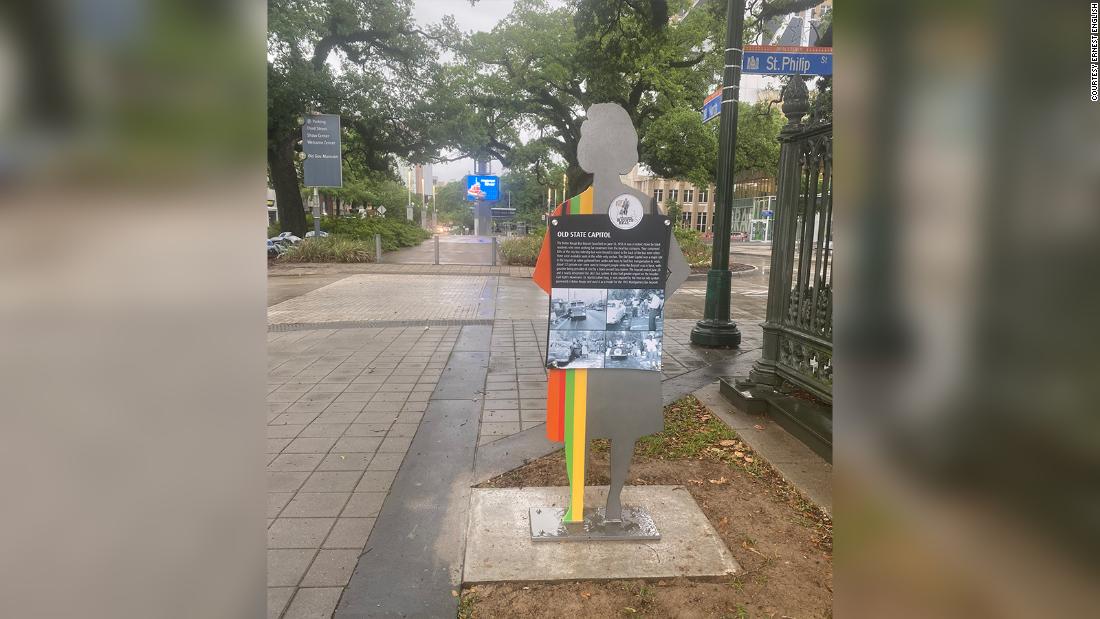The venture started when Louisiana Lt. Gov. Billy Nungesser found his state didn’t have a Civil Rights Trail.
From there, Glenda McKinley instructed CNN she and her group at GMc+Co Strategic Communications have been approached to set the venture in movement, and they began by speaking to completely different communities round the state via outreach conferences.
“We traveled about 3,000 miles and held about 22 meetings around the state, and really got to hear firsthand from the people in the community,” McKinley mentioned.
“Some of (the stories) were oral history, some of them were people actually involved in the movement, and it became very clear that we didn’t need to tell the story — the voices who were still here could tell the story.”
The venture is 2 years in the making, and McKinley mentioned that what they obtained from these conferences actually drove the content material for the path.
“The people were talking about the incidents as if they happened yesterday,” McKinley mentioned. “The way they were able to recall every single detail about what happened — it was unmistakably a difficult time, but the pride, the courage, the determination — there were grown men who were able to articulate for the first time how it impacted their lives.”
The historic significance of these places are marked with a 6-foot tall metal silhouette that resembles a protester holding a picket signal, designed by McKinley’s son Ernest M. English and her artwork director Benjamin Clay. The markers might be half feminine and half male silhouettes.
“Any and all of the creative needed to be from the perspective of the people who were on the front lines,” English instructed CNN.
“At 4 a.m. (the design) just came to me — this is a legacy project for people who were on the front lines… and it needs to make those people proud.”
From the metal silhouette to the brilliant colours used on every show, the concept of hope and courage is obvious to anybody who visits the path markers.
These three markers are simply the starting, and the residents of Louisiana have the skill to appoint different places. From there a committee vets the solutions and decides if there’s sufficient historic data for a marker, McKinley mentioned.
Dooky Chase’s Restaurant
The first marker was positioned on Monday exterior of Dooky Chase’s Restaurant in New Orleans. The restaurant was established in 1941 and was based by Emily and Dooky Chase Sr.
Thurgood Marshall and later freedom fighters reminiscent of the Rev. A.L. Davis, the Rev. Avery Alexander, Virginia Durr, and Jerome Smith have been regulars as they fought for civil rights in native courts and on the streets of the well-known metropolis.
National leaders reminiscent of the Rev. Martin Luther King Jr. would be part of these native leaders for technique classes and dialogue over meals in the upstairs assembly room in the 1960s.
Old State Capitol Building
The second marker might be discovered at the Old State Capitol constructing in Baton Rouge in honor of the bus boycott. In 1953, over 14,000 black residents of Baton Rouge participated in the first bus boycott in the nation, inspiring others, reminiscent of the well-known boycott in Montgomery, Alabama, after Rosa Parks refused to sit down in the again of a bus.
Across the metropolis folks in favor of their efforts went to nice lengths to assist. Black businessman Horatio Thomas bought fuel at price to the boycott members, and a predominately white radio station inspired black residents to boycott and supplied carpools.
Little Union Baptist Church
In addition, the Rev. C.C. McLain, who led the congregation beginning in 1961, was an energetic chief in the group and one other famed Louisiana voice of the Civil Rights Movement. The church additionally acted as a hub for the NAACP and CORE conferences.







